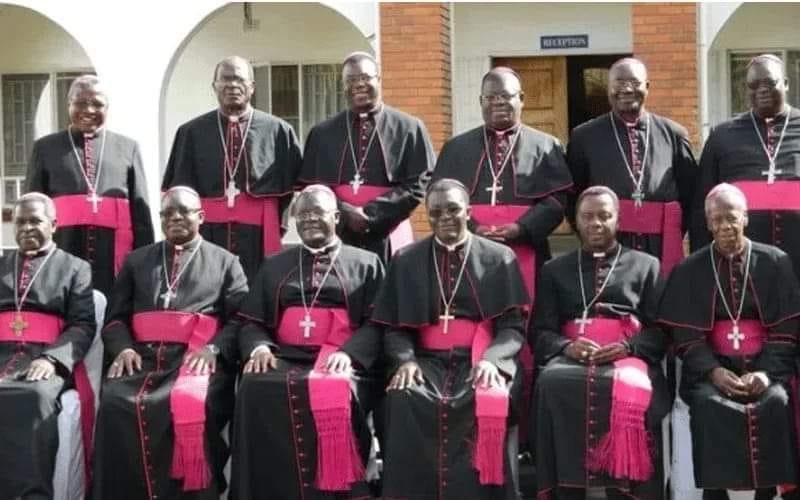Africa-Press – Zambia. Yesterday, the Zambia Conference for Catholic Bishops (ZCCB) issued a pastoral letter addressing various issues in the country, providing guidelines, and occasionally making demands.
Following their long-standing tradition, this pastoral letter, similar to a state-of-the-nation address, will be read across the Republic in all Catholic churches on Sunday, November 12, 2023.
I observed that the letter was couched in advisory language, where, even as the Conference praised the leadership, they simultaneously demanded better performance, bordering on perfection—a scenario reminiscent of “giving with one hand and taking with the other.”
Despite the sensitivities among fellow Catholics, I find these letters generally laden with generalities. The notable exception in this one is the singling out of the UPND Secretary General, Mr. Batuke Imenda, and the attempt to portray it as a view held by the party and government.
For the first time, the Conference has shown an attempt to close ranks and protect one of its own. However, the remarks from Archbishop Alick Banda, to which Mr. Imenda referred, were not made in the Council or in the capacity of the Council.
In my view, this is the most significant exposé of the behind-the-scenes dynamics of the Council. It’s crucial to understand that the Council operates on a “collective responsibility” model where the majority holds sway.
Upon examining the Council’s composition, one can glean insights into the guidelines stemming from its meetings. Historians may find it intriguing to study the pattern of Council letters when the leader of the Government of the Republic of Zambia (GRZ) is not from what is now referred to as the North East region.
The Council’s emphasis on concerns about equality and diversity, among other matters, is commendable. However, it is shocking that they appear tone-deaf to the imbalance in the composition of their own body, the ZCCB, which primarily represents two regions.
The current makeup contradicts the spirit of equity and equality conveyed in the pastoral letter. Does this composition imply that only individuals from the North and East of Zambia predominantly pursue the Catholic priesthood to reach the level of Bishophood?
Most importantly, what measures is the Council implementing to reflect equity and equality? This question gains significance amidst the ongoing local conversation about historical ethnic segregation.
I believe that the Church, being present in all corners of our country, should take a lead in addressing this issue. The conversation on ethnic segregation parallels that of sexual misconduct, a topic the Church tried to deny until progressive leaders confronted it directly.
This is the leadership I yearn for from my Church at this particular moment in history. Imagine the implications of an issue requiring a vote in the Council with its current composition.
I am aware that my opinion may attract criticism from members of the church and relatives of the Council members, but, above all, I am exercising my “right to hold an opinion and express it.”
Looking ahead, I anticipate a pastoral letter condemning public leader Sean Tembo for using offensive language against the Republican President, mocking and humiliating women’s biological makeup.
I look forward to the Council addressing public leader Mr. Kambwili for his tribal monologue. I am eager for the ZCCB to denounce the PF for brutally attacking mourners at Leopards Hills Memorial Park, leaving some without limbs.
There are numerous issues I could list, and what is clear is that as Zambians, we should never shy away from holding those in various forms of the public sphere (politicians, NGOs, religious bodies) to the same standards of accountability.
For More News And Analysis About Zambia Follow Africa-Press







